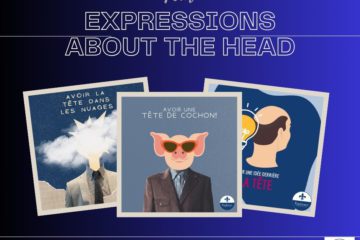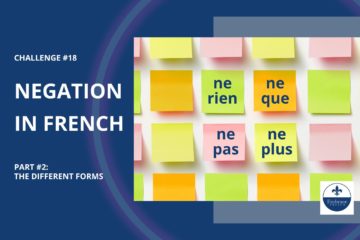The trema or those two funny little dots
CHALLENGE #9

In the French alphabet challenge , I mentioned that, although the alphabet has 26 letters as in English, with accents, cedillas and other peculiarities applicable to the various letters, this added 16 extra letters.
Today, we’re going to take a look at the trema! These two dots above the letter represent a quarter of the 16 additional letters, so I thought it would be a good idea to start with it.
What is the trema?
The trema is two dots placed above a letter like ë or ö. It only applies to vowels, but not to all of them. In fact, it’s never used on A, and only on Y for certain proper nouns (family names, place names, etc.). The trema on the Y is so rare that I’ve never used it myself.
Therefore, for the purposes of this challenge, we’ll be saying that the trema is found on the letters e, i, o and u. They thus become: ë, ï, ö and ü.
What does the trema do?
Separate pronunciation
As you probably know, in French we can use a group of vowels to make a new sound. For example, ai is pronounced è as in « je travaillais » or « j’aime » and oi is pronounced wa as in « boire » or « voir ».
If these letters are found side by side, but need to be pronounced separately, that’s when the trema is used!
The words maïs (corn) and mais (but) illustrate this very well.
Without the trema, it’s the adverb that’s pronounced mè, as in « Je voulais sortir, mais il faisait trop froid” ( wanted to go out, but it was too cold).
With the trema, it refers to the edible plant and is pronounced ma-iss, as in « J’ai fait du pain de maïs” (I made cornbread).
Cancel a hard G
Maybe you already know this, but in French, the g is pronounced like a j with the letters e and i, as in « je vois une girafe » or « je mange un dessert ». If you want to form a hard g sound, as in « gâteau » or « guitare », you cheat by adding a U. Thus, words like « langue » are pronounced with the g in « guitare ».
But this subject is complex enough to make it a challenge in its own right, so I won’t go any further in this explanation.
And what about the trema? Well, there it is! What do we do if we want to pronounce the U followed by a silent E and not create a hard g? We use the tréma!
So, “ambigüe” rhymes with « continue » and not with « langue ».
The trema is quite simple, isn’t it?
I believe the trema is the simplest of the signs and accents added to the letters of the alphabet, because it doesn’t change the pronunciation of the letter itself. It’s really just a guide to the pronunciation of the word in question.
Your challenge
Here’s a list of words with a trema, and I’d like you to practice saying them out loud. I’ve written the pronunciation in italics and the English meaning in brackets.
Aigüe – è gu (sharp)
Ambiguïté – am bi gu i té (ambiguity)
Archaïque – ar ka ik (archaic)
Astéroïde – as té ro id (asteroid)
Canoë – ka no é (canoe)
Coïncidence – ko in ci dens (coincidence)
Égoïste – é go ist (selfish)
Haïr – a ir (to hate)
Héroïsme – é ro ism (heroism)
Inouï – i noo i (unhearded of)
Maïs – ma iss (corn)
Mosaïque – mo za ik (mosaic)
Naïf – na if (naive)
Noël – no el (Christmas)
Paranoïa – pa ra no ya (paranoia)
Stoïque – sto ik (stoic)
Tabloïd – ta blo id (tabloid)
Thyroïde – ti ro id (thyroid)
I also suggest you try to find out, on your computer or cell phone keyboard, how to type the letters with the trema, i.e. ë, ï, ö and ü.
Have you downloaded your free guidebook package?

You can now download a free learning package on the 20 most commonly used verbs in French, conjugated in the present tense. This set includes an ebook with all the verbs and a sentence for each person (je, tu, il, elle, nous, vous, ils, elles), an Excel file to add all the concepts from the ebook to your flashcards application and a video where you can hear me pronounce these verbs and sentences. And it’s free! Download it now!


